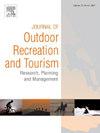Tourists’ perceptions of proximity tourism: Insights from sentiment analysis and fsQCA
IF 4.4
3区 管理学
Q1 HOSPITALITY, LEISURE, SPORT & TOURISM
Journal of Outdoor Recreation and Tourism-Research Planning and Management
Pub Date : 2024-12-11
DOI:10.1016/j.jort.2024.100848
引用次数: 0
Abstract
Since COVID-19, proximity tourism has gained popularity as the natural environment plays a critical role in mitigating psychological issues via restorative effects. Grounded in restorative environment theory, this study examines tourists' perceptions of proximal nature-based tourism by integrating sentiment analysis with fuzzy set qualitative comparative analysis (fsQCA). Study 1 explored tourists’ attitudes toward the values of a nearby natural park, Saguaro National Park, through 14,906 Instagram posts. Among aesthetic, recreational, emotional, social, and educational values, the sentiment analysis revealed that emotional value scored the highest in visiting satisfaction. Study 2 (N = 357) utilized fsQCA to identify four valuation configurations that affect subjective well-being, consistently highlighting emotional value as a critical factor. These findings underscore the significant role of emotional value in proximity tourism. This study is among the first to integrate sentiment analysis with fsQCA in tourism literature, emphasizing methodological innovation. The results also suggest actionable strategies for multiple tourism stakeholders to enhance natural area management and promote proximity tourism.
Management implications
This study identified emotional value receives the highest score for visiting satisfaction and is a necessary condition in all valuation configurations for bolstering well-being. Thus, DMOs should highlight the distinctive values of proximal natural areas and effectively showcase the emotional appeal of nearby destinations to unlock the full potential of proximity tourism as a valuable and resilient facet of the broader tourism sector. DMOs also need to foster collaboration and partnerships with local businesses, attraction management teams, and community organizations to protect the environmental elements and facilities in proximal destinations to enrich the overall tourism experience within proximity to residences. Local government agencies as a crucial role in managing and protecting these areas should make regulatory frameworks, enforce environmental laws, and invest in infrastructure for conservation purposes.
游客对近距离旅游的感知:来自情感分析和fsQCA的洞察
自新冠疫情以来,由于自然环境在通过恢复作用缓解心理问题方面发挥了关键作用,近距离旅游受到了欢迎。本研究以恢复性环境理论为基础,运用情感分析与模糊集定性比较分析(fsQCA)相结合的方法,探讨旅游者对近距离自然旅游的认知。研究1通过14906个Instagram帖子,探讨了游客对附近自然公园——萨瓜罗国家公园(Saguaro National park)价值的态度。在审美、娱乐、情感、社交和教育价值中,情感价值在游客满意度中得分最高。研究2 (N = 357)利用fsQCA确定了影响主观幸福感的四种评估配置,一致强调情感价值是一个关键因素。这些发现强调了情感价值在近距离旅游中的重要作用。本研究在旅游文献中首次将情感分析与fsQCA结合,强调方法创新。研究结果还为多个旅游利益相关者提供了可操作的策略,以加强自然区域管理,促进邻近旅游。本研究发现,情感价值在访客满意度方面得分最高,是所有评估配置中促进幸福感的必要条件。因此,dmo应突出邻近自然区域的独特价值,并有效地展示邻近目的地的情感吸引力,以释放邻近旅游的全部潜力,使其成为更广泛的旅游业中有价值和有弹性的方面。dmo还需要促进与当地企业、景点管理团队和社区组织的合作和伙伴关系,以保护邻近目的地的环境元素和设施,丰富住宅附近的整体旅游体验。作为管理和保护这些地区的关键角色,地方政府机构应该制定监管框架,执行环境法律,并为保护目的投资基础设施。
本文章由计算机程序翻译,如有差异,请以英文原文为准。
求助全文
约1分钟内获得全文
求助全文
来源期刊

Journal of Outdoor Recreation and Tourism-Research Planning and Management
HOSPITALITY, LEISURE, SPORT & TOURISM-
CiteScore
6.70
自引率
5.30%
发文量
84
期刊介绍:
Journal of Outdoor Recreation and Tourism offers a dedicated outlet for research relevant to social sciences and natural resources. The journal publishes peer reviewed original research on all aspects of outdoor recreation planning and management, covering the entire spectrum of settings from wilderness to urban outdoor recreation opportunities. It also focuses on new products and findings in nature based tourism and park management. JORT is an interdisciplinary and transdisciplinary journal, articles may focus on any aspect of theory, method, or concept of outdoor recreation research, planning or management, and interdisciplinary work is especially welcome, and may be of a theoretical and/or a case study nature. Depending on the topic of investigation, articles may be positioned within one academic discipline, or draw from several disciplines in an integrative manner, with overarching relevance to social sciences and natural resources. JORT is international in scope and attracts scholars from all reaches of the world to facilitate the exchange of ideas. As such, the journal enhances understanding of scientific knowledge, empirical results, and practitioners'' needs. Therefore in JORT each article is accompanied by an executive summary, written by the editors or authors, highlighting the planning and management relevant aspects of the article.
 求助内容:
求助内容: 应助结果提醒方式:
应助结果提醒方式:


